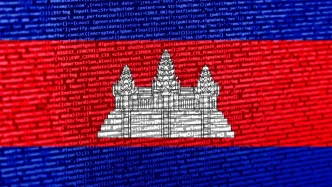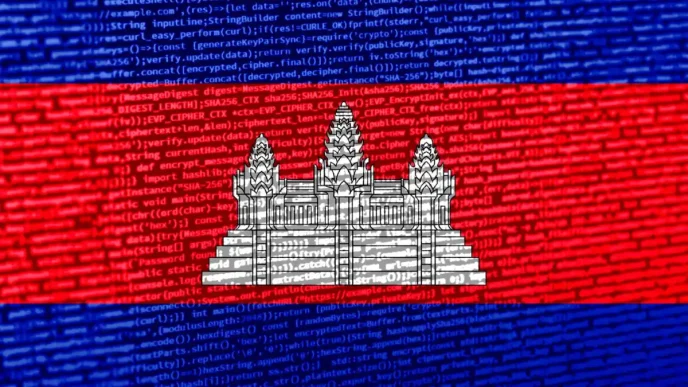Chinese President Xi Jinping concluded a significant three-nation tour of Southeast Asia on April 21, 2025, returning to Beijing after state visits to Vietnam, Malaysia, and Cambodia. The trip, described by officials as a pivotal moment for regional cooperation, saw the signing of over 100 cooperation agreements across political, economic, and security domains. Amid a backdrop of global economic uncertainty and trade tensions, Xi’s engagements underscored China’s intent to deepen ties with neighboring countries and position itself as a stabilizing force in the region.
A Strategic Outreach in Turbulent Times
The timing of Xi’s first overseas trip of 2025 is notable, coming as the United States escalates a tariff war that has rattled global markets. Analysts suggest that China is leveraging this moment to reinforce its image as a reliable partner in Southeast Asia, a region critical to its Belt and Road Initiative (BRI) and broader geopolitical strategy. The visits to Hanoi, Putrajaya, and Phnom Penh were marked by high-level discussions aimed at countering unilateralism and protectionism, themes echoed by leaders and experts alike.
In Vietnam, Xi met with To Lam, general secretary of the Communist Party of Vietnam Central Committee, who highlighted the strengthened confidence in overcoming shared challenges following the visit. A series of agreements, including the launch of the China-Vietnam railway cooperation mechanism, signaled a deepening of economic ties. Additionally, the establishment of a “3+3” strategic dialogue mechanism on diplomacy, defense, and public security at the ministerial level underscored a commitment to closer security collaboration.
In Malaysia, Prime Minister Anwar Ibrahim described Xi’s visit as a highlight of bilateral friendship. As Malaysia prepares to assume the rotating chair of the Association of Southeast Asian Nations (ASEAN) in 2025, Ibrahim emphasized the importance of free trade and openness, pledging to enhance coordination among ASEAN nations to address external pressures. A mutual visa exemption agreement between China and Malaysia was among the key outcomes, facilitating greater people-to-people exchanges.
In Cambodia, Prime Minister Hun Manet praised China’s role in providing stability amid global turbulence. The signing of a cooperation agreement on the Funan Techo Integrated Water Resources Management Project, which focuses on improving livelihoods, was a significant deliverable. China and Cambodia also agreed to establish a joint foreign and defense dialogue mechanism, further cementing security ties.
Economic Cooperation as a Cornerstone
Economic collaboration emerged as a central theme of Xi’s tour, with agreements spanning infrastructure, digital innovation, and green technology. Du Lan, deputy head of the China Institute of International Studies’ Asia-Pacific Studies Department, noted that the deepening economic ties with Vietnam, Malaysia, and Cambodia would help these nations expand markets and stabilize industrial and supply chains. This, she argued, could bolster regional resilience against global economic uncertainty.
China’s alignment of the BRI with the national development strategies of these countries was a recurring focus. In Vietnam, for instance, railway cooperation is expected to enhance connectivity, a critical component of Hanoi’s infrastructure ambitions. In Malaysia, discussions on digital economy initiatives and artificial intelligence cooperation pointed to a forward-looking partnership. Cambodia’s Funan Techo project, meanwhile, addresses water resource management, a pressing issue for rural communities, with Chinese expertise and funding playing a key role.
Xu Liping, director of the Chinese Academy of Social Sciences’ Center for Southeast Asian Studies, emphasized that these visits highlighted China’s commitment to ASEAN’s central role in regional cooperation. He suggested that the outcomes would provide greater certainty and stability not only for Southeast Asia but also for the global economy, especially at a time when multilateral trading systems face significant challenges.
Navigating Global and Regional Dynamics
Xi’s tour was framed by Chinese officials as a demonstration of Beijing’s prioritization of neighboring countries in its foreign policy. Days before the trip, China held a central conference on work related to neighboring countries, signaling the strategic importance of these relationships. Foreign Minister Wang Yi, speaking at a media briefing on April 20, 2025, noted that all three nations welcomed China’s focus on regional partnerships.
The trip also carried a broader message of unity against external pressures, particularly in light of trade disputes with the United States. Cambodian Prime Minister Hun Manet explicitly referenced global turbulence caused by unilateralism, positioning China as a counterbalance that offers stability. Similarly, Malaysia’s Anwar Ibrahim stressed the need for ASEAN to collectively address external changes, with China as a key partner in this effort.
However, some regional observers caution that while China’s economic and political overtures are significant, they may also raise questions about dependency. The extensive cooperation agreements, while beneficial, could deepen reliance on Chinese investment and technology in areas like infrastructure and digital innovation. If not balanced with diversified partnerships, this could limit the autonomy of smaller nations in the region, though no immediate evidence suggests such concerns have materialized.
Security and Defense: A Growing Focus
Beyond economic ties, security and defense emerged as critical areas of collaboration during Xi’s visits. The establishment of dialogue mechanisms with Vietnam, Malaysia, and Cambodia reflects a strategic intent to build trust and coordinate on regional security issues. The “3+3” mechanism with Vietnam, for instance, is designed to foster high-level exchanges on diplomacy, defense, and public security, addressing shared concerns such as border stability and transnational crime.
Similar joint mechanisms with Malaysia and Cambodia aim to enhance coordination on foreign policy and defense matters. While specifics of these agreements remain limited, they signal a deepening of China’s security engagement in Southeast Asia, a region where territorial disputes, particularly in the South China Sea, continue to simmer. China’s approach appears to prioritize dialogue over confrontation, though the long-term implications of these mechanisms remain to be seen.
People-to-People Connections and Future Prospects
Xi’s tour also emphasized cultural and societal links, with initiatives like the China-Malaysia visa exemption agreement aimed at fostering greater interaction between citizens. In Vietnam, To Lam noted the elevation of people-to-people friendship to new heights, suggesting that cultural exchanges would complement economic and political ties. These efforts align with China’s broader narrative of building a “community with a shared future” with its neighbors, a concept repeatedly highlighted during the visit.
Scientific and technological innovation was another area of focus, with agreements on artificial intelligence and other emerging fields. These partnerships position China as a leader in providing solutions for digital and green economies, areas of growing importance for ASEAN countries seeking sustainable development. The potential for technology transfer and capacity building could yield significant benefits, though it may also raise questions about data security and technological sovereignty, issues that warrant close monitoring.
A Message of Stability and Cooperation
As Xi Jinping returned to Beijing, the overarching message of his Southeast Asia tour was one of commitment to regional stability and mutual benefit. The signing of over 100 cooperation documents across diverse fields reflects a comprehensive approach to partnership, one that seeks to address immediate needs while laying the groundwork for long-term collaboration. Chinese officials and regional leaders alike framed the visit as a rejection of unilateralism and a defense of the rules-based international order.
Yet, as global dynamics continue to shift, the outcomes of this tour will be closely watched. Will China’s deepened engagement with Vietnam, Malaysia, and Cambodia translate into tangible benefits for local populations? How will ASEAN navigate the balance between Chinese influence and other global powers? These questions linger as the region charts its path forward, with China’s role as a neighbor and partner under renewed scrutiny.
For now, the streets of Hanoi, Putrajaya, and Phnom Penh bear witness to a moment of diplomatic convergence, one that could shape Southeast Asia’s future amid an uncertain global landscape.














